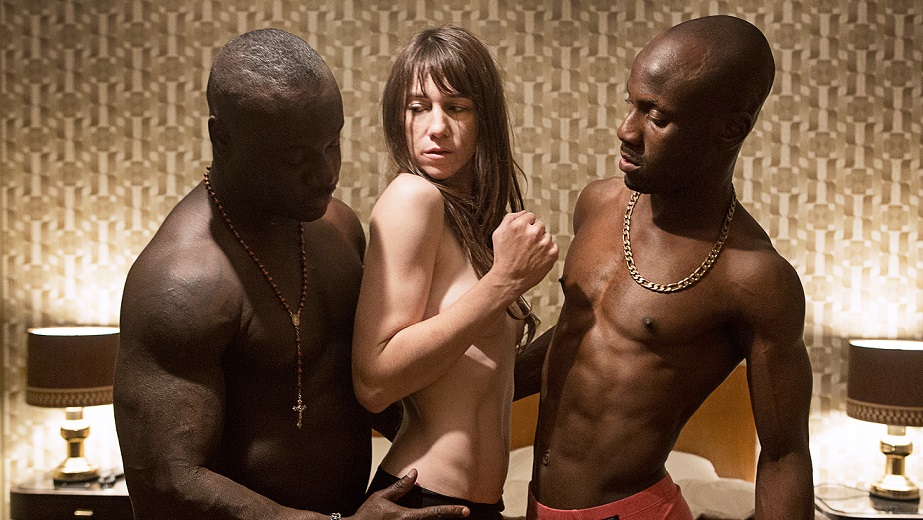Nature and Artifice in Lars von Trier’s Enlightenment
Lugemisaeg 7 minIs Trier really not talking about sex? The answer lies in exploring the 18th century epistolary novels influence on the creation of the Danish film director.
Nymphomaniac isn’t about sex. There. I said it. It’s perhaps yet another of von Trier’s elaborate pranks on his public to promise porn, titillate with stills of gang bangs, with posters of actors’ orgasm faces, and to ultimately deliver something closer in style and structure to a costume drama. You want to see Charlotte Gainsbourg have unsimulated sex? Here’s some Rousseau with a side of de Sade.
Like Dogville or Breaking the Waves, Nymphomaniac is organized like a novel, with chapter headings and title pages. More specifically, it’s like an eighteenth century novel, of the pre-revolutionary kind, balancing on the edge of Enlightenment and Romanticism. Of course, von Trier’s ancien régime looks suspiciously like our own not-so-distant past, replete with the soft focus and itchy polyester of the 1970s, with some New Wave haircuts thrown in for good measure. The narrative structure, however, is distinctly unmodern. Rather than offering central tensions, climaxes, and denouements, it presents a sequence of morally coded encounters, interspersed with quasi-philosophical discussion.
The closest and most frequently made connection here is to Marquis de Sade, particularly as von Trier is clearly a fan of sadism’s founding father. The central character in Melancholia is named after de Sade’s Justine, which Nymphomaniac reads like a modern version of. Apart from abundant bondage, both are confessionals, where women retell their sexual experiences to outside parties, who in turn structure these tales into moral (or amoral) narratives. De Sade presents two kinds of women, both defined by their attitudes to virtue: the virtuous but victimized Justine, and her more pragmatic sister Juliette. The latter becomes a noble nun, the former – famously unsubtly – gets hit by lightning and dies. Nymphomaniac’s Joe, on the other hand, is both Justine and Juliette. She seeks moral redemption and hedonistic pleasure in equal measure, she is simultaneously a victim and a perpetrator within her own story.
Yet both Justine and Nymphomaniac position themselves within a broader canon of Enlightenment texts. Like in Mary Wollstonecraft’s Mary: A Fiction, von Trier’s Joe escapes an unloving mother, to ecstatically seek out the company of both men and women. Like Samuel Richardson’s Pamela – whose virtue de Sade famously parodied in Justine – she marries her boss and settles, however briefly, into upper class contentment. All of them attempt to delineate the place of women within society, by using their sexuality (or perceived lack thereof) as an organizing principle. Whereas for Richardson or de Sade women were largely victims of male lust – or playing a man’s game – Wollstonecraft’s characters have some forms of agency, albeit clouded by romantic expectations.
Von Trier, by alluding to these pre-feminist concerns, administers his usual kick in the balls to “enlightened”, liberal masculinity. Joe’s interlocutor Seligman, who professes to prefer books to sex, who brings her cakes and tea and urges her to reclaim pride in her sexuality in the face of patriarchal expectation, ultimately reveals himself to be another exploiter, ready to take advantage of the libido he himself has just sanctioned. I would shout spoiler alert here, but that would be to miss the point. It is the precise inevitability of this that seems to be at the heart of von Trier’s narrative. The ending closely mirrors that of Dogville, and Seligman seems to be another refraction of Paul Bettany’s Tom – an idealist whose moral program eventually turns on itself. Whereas for de Sade these men would only don moral faces to hide their true, pleasure-seeking nature, von Trier instead acknowledges that these are the inherent self-delusions of systemic oppression.
I would argue that von Trier’s interest in eighteenth-century morality stems, in part, from his own ambivalence towards women’s narrative place. In his early films, women were prostitutes, victims, shadowy archetypes. In his Golden Heart Trilogy women are at the centre, but primarily as symbols of simplicity, sincerity, and innocence. Both Bess in Breaking the Waves and Selma in Dancer in the Dark are sacrificial lambs, who give up themselves following the commands of men. Their ultimate devotion lies outside themselves – for Bess it is to her husband, for Selma to her son.
Dogville represented the turning point in these representations, as the enslaved Grace gets herself a gun and shoots back at her oppressors. Nymphomaniac’s Joe falls in the same category. She fends off Seligman’s patronizing interventions into her own narrative, and she not only uses a gun, but becomes a mobster debt collector. These women might appear soft-spoken or naive, but they are devoid of the selfless goodness that defined an earlier generation of von Trier women. Here the parallel to de Sade and Richardson stands out more clearly: the virtue they were battling over is not far removed from von Trier’s conception of goodness. Ultimately, like de Sade, he concedes that goodness (or virtue) in its purest form are unlivable – both Dogville’s Grace and the eponymous Justine unravel more than they repair.
Reducing women to foils and essences is, of course, politically fraught. But there is another dimension to this. Von Trier, throughout his career, has been concerned with man’s relationship with nature, in the process of categorization and classification. In this way, his Seligman is equally a relic of a form of Enlightenment masculinity, in which man was mind and woman was body. When confronted with stories of sexual adventures he creates elaborate analogies to fly fishing, Fibonacci sequences, or the Great Schism of 1054. He sifts and sorts through Joe’s life like an encyclopedia, like a Linnaeus somewhat late to the party. He also expects veracity, whereas she, in turn, seems to treat men like plot devices (the same man – Jerome – is assigned as both first love, mature love, and last humiliation).
Joe’s father is a similarly Linnaean man – he appears to be an arborist, making her see differences between trees. He does so, however, through a series of sentimental myths, and his park becomes the emotional centre of the film, a counterpoint to the claustrophobia of airless rooms and train compartments. Joe, in turn, attempts no mastery over nature, and instead strives for an ecstatic union with it. She’s the Sturm und Drang to Seligman’s reason, the Counter to his Enlightenment. She experiences out-of-body orgasms soaring over open fields, accompanied with religious visions, and rambles proudly into wild terrain, like a figure from a Friedrich painting. Sex here is a stand-in for the Sublime, for moments of transcendence.
In many ways, von Trier’s career has been marred by precisely this tension between the boundless, the transcendental, and the highly formalized classificatory system of something like Dogme 95. One attempts to create a heightened sense of nature, while the other reigns in it, trying to remove artifice for the sake of authenticity. The ending of Breaking the Waves – shot with a hand-held camera, well within the Dogme style – hears the ringing of church bells on an otherwise empty ocean. In itself this would have been an eerily poignant moment, but von Trier breaks his own code further by cutting to CGI church bells above the clouds. It is perhaps this ability to make the unspoken visible – to go to the proverbial there – that is part of von Trier’s appeal. There is no tasteful cut, no looking away. The planet in Melancholia hits earth. You see it.
Sex in Nymphomaniac gets the same treatment. But you are equally left to wonder about the line between nature and artifice, as what had promised to be filmed with the baring-all principles of porn, became intercut with body doubles, CGI effects, and robotic limbs. And so, von Trier breaks yet another genre engagement, and another frontier of authenticity is torn down. But that is perhaps another story. Because this isn’t about sex, after all.

